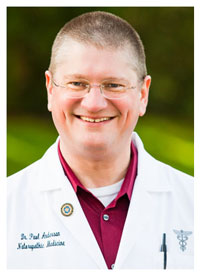On-Demand Courses
Biologic medications: pharmacology & patient management
Credits:
6 Category A – Pharmacology
Venue:
Online
Open to:
NDs Health-care practitioners
Course type:
On-demand
Course description
Biologic medications are the fastest growing and most complex drug class in medicine. In this four-part series Dr. Anderson will break down the pharmacology and clinical uses of these drugs and how natural therapies interact with them.
Learning outcomes
- Learn what a biologic medication is
- Describe the general classes of these medications
- Understand the differences between older biologics and newer classes
- Discuss general mechanisms of action for each class
- Comprehend common uses of each class
- Discover how the same drugs are often used in cancer and autoimmunity and why
- Learn the common natural medications used with these drugs and any cautions or contraindications found in their combination
- Learn when it is unsafe to remove these drugs from a patients care plan
- Understand when these drugs must be removed due to adverse events
- Learn how to manage the patient who has had the biologic removed
- Discuss the process of safe tapering and red flags to monitor with all patients on biologic medication strategies
Course format
Part 1 - Pharmacology and Mechanisms of Action
Part 2 - Efficacy and Safety
Part 3 - Improving Efficacy and Safety and Managing Patients on Biologics
Part 4 - Safe Tapering or D/C Practices
Part 2 - Efficacy and Safety
Part 3 - Improving Efficacy and Safety and Managing Patients on Biologics
Part 4 - Safe Tapering or D/C Practices
Total: 6-hours (1.5 hours per part)
Instructor(s)/Speaker(s)
Dr. Paul S. Anderson, ND
Dr. Paul S Anderson, ND, is CEO of the Anderson Medical Group which includes Advanced Medical Therapies, a state of the art medical centre providing fully compliant IV, hyperbaric and mild hyperthermia therapies and a medical education company Consult Dr. Anderson. He is a graduate of the National University of Natural Medicine in Portland, Oregon and began instructing at medical schools in the early 1990s.
